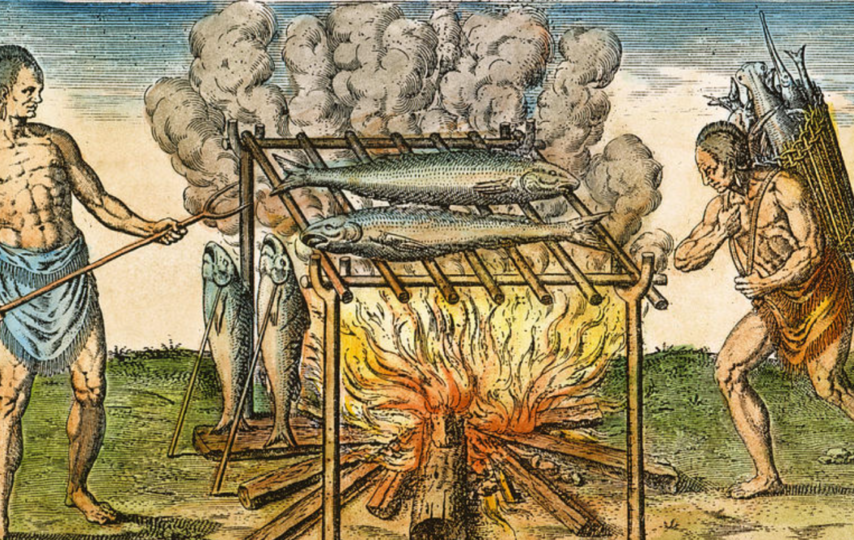American barbecue is a rich culinary tradition with deep regional roots, offering a diverse array of flavors and techniques. From the tangy vinegar sauces of the Carolinas to the sweet, smoky meats of Kansas City, and the beef-centric barbecues of Texas, each region has its own unique style. This guide explores these distinctive barbecue traditions and highlights the best places to experience them, showcasing the true art of American BBQ.
The Rich History and Diversity of American BBQ
Barbecue is more than just a method of cooking meat; it is a deeply ingrained cultural tradition in the United States, with distinct regional styles that reflect the diversity of the country. Each region boasts its own unique approach to barbecue, shaped by local ingredients, historical influences, and cultural practices. The primary regions known for their distinct barbecue styles are the Carolinas, Kansas City, Texas, and Memphis, each offering a unique flavor profile and cooking technique.
Preserving Barbecue Recipes with Digital Tools
In today’s digital age, technology has revolutionized the way we store and share information, making it easier than ever to preserve and distribute cherished recipes. One particularly useful tool for this purpose is the conversion of Word to PDF. This process ensures that your documents are universally accessible and retain their formatting across different platforms.
Carolina Barbecue: Vinegar and Mustard Traditions
Carolina barbecue is renowned for its tangy and flavorful sauces, which are divided into two main styles: Eastern and Western.
Eastern Carolina BBQ
Eastern Carolina barbecue primarily uses a vinegar-based sauce that is spiced with black pepper, crushed red pepper, and other seasonings. This style of barbecue typically features whole hog cooking, where the entire pig is slow-cooked over a wood fire. The result is tender, smoky meat that is chopped or pulled and mixed with the vinegar sauce.
Western Carolina BBQ
Western Carolina, also known as Piedmont or Lexington-style, incorporates a tomato base into the vinegar sauce, giving it a slightly sweeter and richer flavor. This style focuses on pork shoulder rather than whole hogs, which is cooked slowly and served with a red slaw that complements the meat’s savory profile.
Best Places to Try Carolina BBQ
B’s Barbecue in Greenville, North Carolina, is a legendary spot for experiencing authentic Eastern Carolina barbecue. Lexington Barbecue in Lexington, North Carolina, offers a quintessential taste of Western Carolina barbecue with its famous pork shoulder and red slaw.
Kansas City BBQ: The Melting Pot of Barbecue Styles
Kansas City BBQ is known for its rich and diverse flavors, incorporating a variety of meats and an emphasis on sweet, tangy tomato-based sauces. This style is characterized by slow-smoking meats over a mix of woods, including hickory and oak, to achieve a deep, smoky flavor.
Signature Dishes
Kansas City barbecue includes a wide range of meats, from ribs and brisket to burnt ends and sausage. The sauce is thick and sweet, often containing molasses, brown sugar, and a blend of spices that create a luscious glaze on the meats.
Best Places to Try Kansas City BBQ
Joe’s Kansas City Bar-B-Que is a must-visit, renowned for its Z-Man sandwich and perfectly smoked meats. Arthur Bryant’s Barbeque offers a historic taste of Kansas City barbecue with its iconic burnt ends and tangy sauce.
Texas BBQ: A Celebration of Beef
Texas barbecue is synonymous with beef, particularly brisket, and is divided into several regional styles, each with its own unique characteristics.
Central Texas BBQ
Central Texas barbecue is known for its minimalist approach, focusing on the quality of the meat and the smoking process. The meat is typically seasoned with just salt and pepper and smoked over oak or pecan wood. The result is a tender, juicy brisket with a perfect smoke ring.
East Texas BBQ
East Texas barbecue features a more sauced approach, with meats that are smoked until they are fall-off-the-bone tender and then slathered in a sweet, tomato-based sauce. This style often includes pork as well as beef.
South Texas BBQ
In South Texas, barbecue is influenced by Mexican culinary traditions, with a focus on barbacoa and fajitas. The meat is frequently marinated and cooked over mesquite wood, giving it a distinct, robust flavor.
West Texas BBQ
West Texas barbecue, also known as cowboy-style, is cooked over direct heat, typically using mesquite wood. This method imparts a bold, smoky flavor and a characteristic char to the meat.
Best Places to Try Texas BBQ
Franklin Barbecue in Austin, Texas, is famous for its brisket and long lines of eager customers. Snow’s BBQ in Lexington, Texas, offers a legendary experience with its award-winning barbecue, helmed by pitmaster Tootsie Tomanetz.
Memphis BBQ: A Love Affair with Pork
Memphis barbecue is all about pork, particularly ribs and pulled pork, with a focus on both wet and dry styles.
Wet Ribs
Wet ribs are basted with a tangy, tomato-based sauce during cooking, resulting in a flavorful, sticky glaze that enhances the smoky meat.
Dry Ribs
Dry ribs are seasoned with a dry rub of spices before cooking, creating a savory, crusty exterior that highlights the meat’s natural flavors.
Best Places to Try Memphis BBQ
Central BBQ is known for its mouthwatering ribs and pulled pork, available in both wet and dry styles. Charlie Vergos’ Rendezvous offers a unique experience with its famous dry-rubbed ribs, served in a historic downtown Memphis location.
Conclusion: The Art and Tradition of American BBQ
Exploring the different styles of American BBQ is a journey through the diverse culinary landscape of the United States. Each region’s unique approach reflects its history, culture, and local ingredients, offering a rich tapestry of flavors and techniques. Whether you prefer the tangy vinegar sauces of the Carolinas, the sweet and smoky meats of Kansas City, the beef-centric traditions of Texas, or the pork specialties of Memphis, there is a barbecue style to satisfy every palate. By embracing digital tools like Word to PDF conversion, you can preserve and share these treasured recipes, ensuring that the art of American barbecue continues to thrive for future generations to enjoy.



